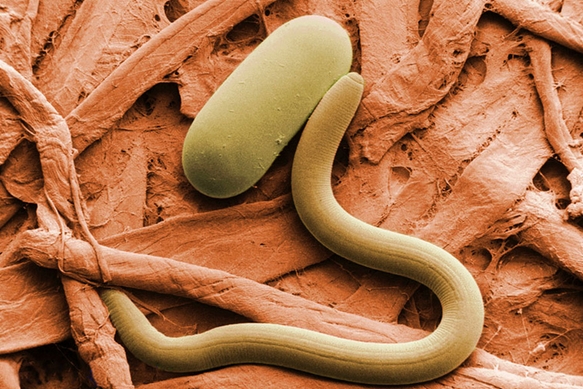Researchers discover a plant that can counteract arsenic toxicity
By ralphflores // 2021-09-06
Tweet
Share
Copy

Researchers have found that Lantana grisebachii, a flowering plant native to South America, can counteract arsenic toxicity. In their report, which was published in the Journal of Dietary Supplements, a team of researchers from Brazil and Argentina investigated whether L. grisebachii can protect against arsenic toxicity using an arsenicosis rat model.
Arsenic: a dangerously ubiquitous chemical
Arsenicosis, or arsenic poisoning, occurs due to exposure to high levels of arsenic. In the U.S., cases of arsenic poisoning are mainly caused by eating food and drinking water contaminated with arsenic. A person can also be exposed to arsenic through inhalation or skin contact, but these happen less often. Foods that are often contaminated with arsenic include meat, fish and poultry. Aside from fish, shellfish and algae also contain arsenic in the form of arsenobetaine and arsenocholine. A recent study found that hijiki, a type of seaweed harvested from seas off Japan and Korea, contains high levels of inorganic arsenic. People can also be exposed to arsenic through their drinking water, often as a result of industrial or agricultural pollution. Arsenic is used as an alloying agent, as well as an active ingredient in some pesticides. It's also used to produce glass, pigments, paper, metal adhesives, wood preservatives and ammunition. The chemical is even used in feed additives and pharmaceuticals. The U.S. Geological Survey reports that dangerously high levels of arsenic have been found in drinking water wells in 25 states in the country. This means that nearly 2.1 million Americans are potentially exposed to arsenic-laced drinking water. A person exposed to arsenic is at risk of damaging nearly all of his organ systems. Chronic exposure to arsenic can cause anything from skin lesions and patchy skin hyperpigmentation to the development of skin, lung and bladder cancers. Other clinical presentations for chronic arsenicosis include lesions in the liver, localized edema and reduced heart function. For their study, South American researchers used phytotherapy -- treatment that involves the use of medicinal plant extracts -- to counteract the adverse effects of arsenic exposure. The team used L. grisebachii, a lantana species native to South America, as earlier studies have found that the plant could help reduce arsenic-related dysfunction. The researchers tested their hypothesis using a rat model for arsenicosis. Prior to arsenic exposure, they treated the rats with varying doses of L. grisebachii extract for 30 days. They then obtained viable splenocytes -- white blood cells in the spleen -- from the rats and looked at several biomarkers for arsenic toxicity. They found that treatment with the L. grisebachii extract prevented arsenic from causing damage to the cells. According to the researchers, L. grisebachi was able to do this by preventing arsenic from accumulating in the cells and causing lipid peroxidation, which is known to impair immune cell function.Reducing arsenic in soil using plants
In a separate study, researchers from Purdue University found that brake fern (Pteris vittata), a plant native to China, can absorb high amounts of arsenic from the soil. According to the team, brake fern uses arsenic as a phosphate replacement to break down glucose for energy. This allows the plant to thrive and grow in soils that don't have enough phosphate to support other plant life. (Related: Is this Chinese fern the key to preventing arsenic poisoning?) Because of its unique properties, experts are looking at brake fern to clean arsenic-contaminated soil -- a common problem in areas where arsenic is industrially used. The researchers found that planting brake fern in contaminated soil can reduce its arsenic content by as much as 50 percent. Learn more about arsenic and other heavy metals at HeavyMetals.news. Sources include: Science.news Healthline.com ATSDR.CDC.gov 1 WHO.int USGS.gov ATSDR.CDC.gov 2 TAndFOnline.com Hindawi.comTweet
Share
Copy
Tagged Under:
natural medicine herbal medicine heavy metals alternative medicine research herbs prevention natural cures plant medicine remedies arsenic poisoning goodscience goodhealth goodmedicine Lantana grisebachii arsenic toxicity
You Might Also Like
By Mary Villareal // Share
By Arsenio Toledo // Share
Recent News
EPA plans to regulate phthalates over worker and environmental health risks
By lauraharris // Share
TikTok parent ByteDance goes all in with $14B Nvidia chip SPLURGE
By kevinhughes // Share
The Sacred Root: The untold power of iboga to heal trauma and addiction
By kevinhughes // Share










